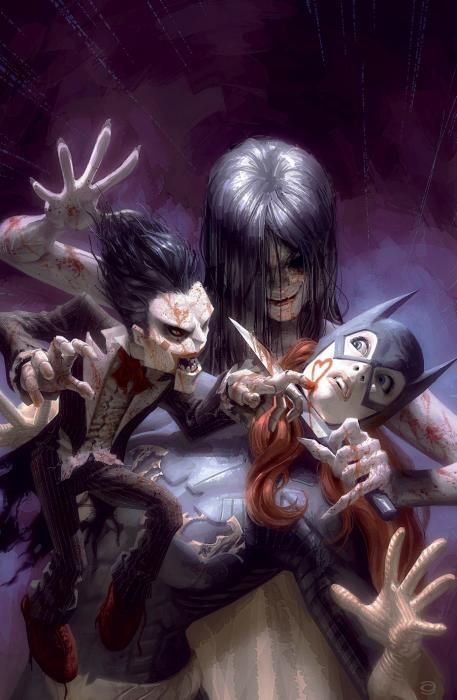Writer Gail Simone deals with Barbara Gordon's psychological fallout in "Batgirl" #21, in the aftermath of Batgirl's tense showdown with her psychopathic brother last issue. In fact, there are more family issues in this comic than in an episode of "Dr. Phil." These added dynamics are one of the emerging strengths of Simone's run on this title, on top of the relationship between Barbara and Commissioner Gordon.
Barbara also faces the unique challenge of her police commissioner father determined to bring in her alter ego, in addition to dealing with her own responsibility for the apparent loss of her brother. All the while, both Barbara and Jim Gordon struggle with the long-lost Mrs. Gordon's tentative return to their lives. Batgirl's conversation with her work-sibling Nightwing continues to reflect a different sort of family fallout; namely, the tension that now exists between the Bat-family and Batman himself, in the wake of the recent "Death of the Family" arc.
The dynamic is apparent from the book's opening scene, where Nightwing's distant, almost flippant demeanor is in direct contrast to Barbara's solemn, remorseful tone. As Nightwing, in costume, takes out a bunch of thugs, Barbara sits alone in her bedroom, hesitant to even don her own costume again. However, Simone shakes the cobwebs from Barbara's brain, and puts Barbara back in the cape and cowl as she takes care of unfinished business with a new villain, The Ventriloquist.
That's right; a new villain, no Arnold Wesker, and no laughable Scarface dummy. The new Ventriloquist is a far more sinister and deadlier incarnation of the character that Simone uses to great effect against an emotionally weakened Batgirl. This is a villain that seems perfectly comfortable with the likes of Dollface and a leatherfaced Joker in the Bat-family's creepier neo-rogues' gallery.
Simone shows her strength in letting readers see into the head of Batgirl during fight sequences, often a part of the story where many writers either resort to stilted banter between foes, or elect to just let the artist do all the talking. Simone walks the thin line that's perfectly centered between these opposing approaches by letting the readers know Barbara's thoughts about her foe and how she should change fighting tactics accordingly. Rarely can a writer actually enhance a fight scene with narration, but Simone pulls it off repeatedly and impressively.
Newcomer artists Fernando Pasarin and Jonathan Glapion bring a clean style to the story; their lines are crisp, and the scene of the Batgirl vs. The Ventriloquist battle is a pretty convincing and literal house of horrors, but there are a couple of panels during the battle scene that don't quite convey the action. As a whole, though, the pair does a nice job with the sequence as well as the remainder of the book.
Simone continues her successful run on the title, and although Pasarin and Glapion are the latest in a seeming rotating roster of artists, they are also the latest to make the run look as good as it reads. This comic remains in the top tier of DC's output.

